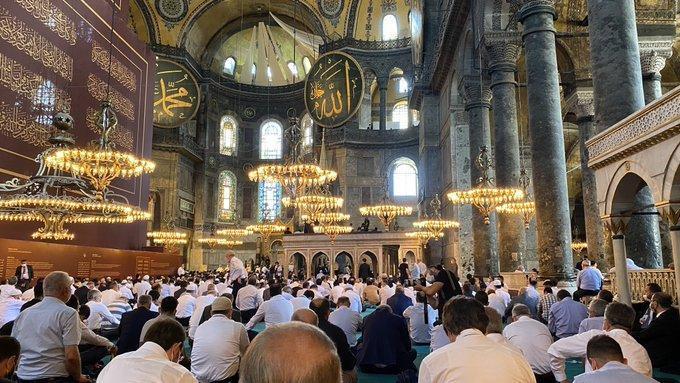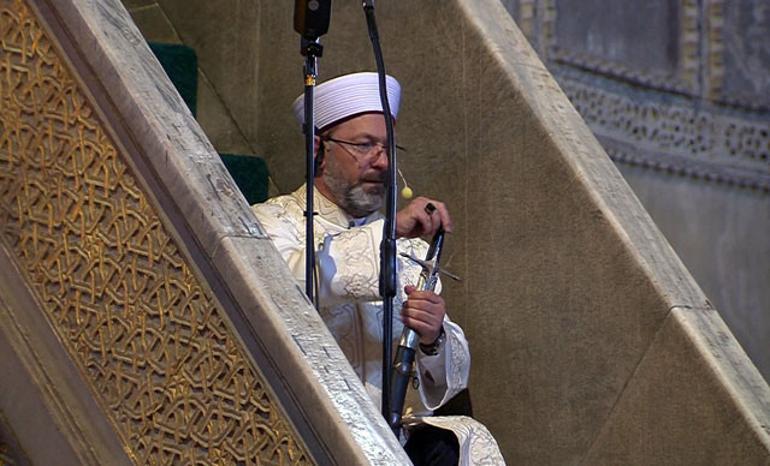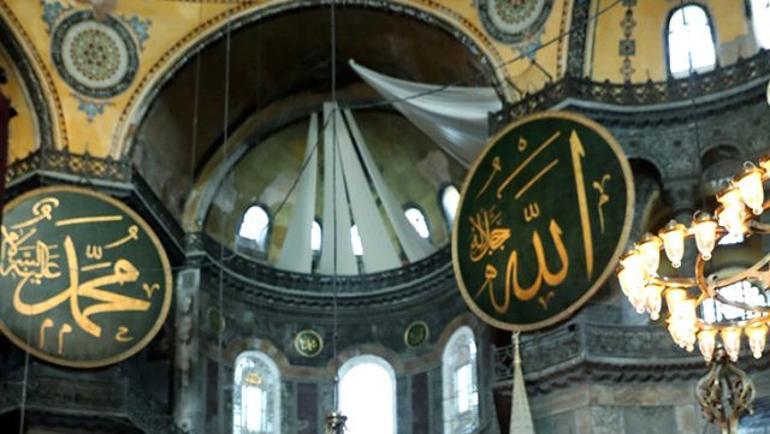
After more than eight decades as a museum, Turkey’s iconic Hagia Sophia reopened for Islamic worship for the first time with Friday prayers with the participation of thousands of people.
Thousands of people, including top officials, politicians and many who traveled from across Turkey, took part in the traditional Friday prayers both inside and outside the historic site in Istanbul, Turkey’s largest metropolis.
“Now this place [the Hagia Sophia] has returned to its original form, it became a mosque again,” said Turkish President Recep Tayyip Erdoğan, wishing the historical monument will continue serving as a mosque forever to all believers.
“However, it is a place where people from all religions can come and visit as a cultural heritage of all humanity,” he added.
Hagia Sophia served as a church for 916 years until the conquest of Istanbul, and a mosque from 1453 to 1934, nearly half a millennium.
On July 10, a Turkish court annulled a 1934 Cabinet decree that had turned Hagia Sophia into a museum, paving the way for its use again as a mosque after an 86-year hiatus.
By mid-Friday morning, congregants were arriving in the area for the opening, holding prayer rugs in their hands, as verses from the Quran were read out over loudspeakers.
Crowds formed at checkpoints surrounding the historic heart of Istanbul, where thousands of police maintained security.
Upon entering the secured area, the worshippers, wearing face masks, sat spaced out on prayer mats in the city’s Sultanahmet Square.
However, the authorities stopped accepting new visitors around Hagia Sophia due to the increasing crowd.
“All of our prayer areas around the Hagia Sophia Mosque are full. Our guest entries to these areas have been stopped due to the pandemic,” the Istanbul’s Governor’s office said in a statement.
A limited number of worshippers were allowed into the building to ensure adequate social distancing measures were in place.

Many joined the prayer from public spaces nearby and from the rooftops of nearby buildings. Security officials had earlier closed off streets leading into the mosque area in order to better manage the expected worshippers.
Paintings, depictions and mosaics were closed with a system of curtains during prayers.
Before the Friday prayers, Erdoğan recited from the Quran inside the reopened mosque, choosing from both the Surah Al-Fatihah and the Surah Al-Baqarah.
Then Ali Erbaş, the head of Turkey’s Presidency of Religious Affairs (Diyanet), went up to the pulpit with a sword and read out the Friday sermon, or khutbah.
“Hagia Sophia is the conquest’s symbol and the entrustment of its Conqueror who endowed it on condition that it remains a mosque until the last day,” Erbaş said in the khutbah with reference to the Ottoman sultan Mehmed II, who conquered Istanbul.
Later, four muezzins from the mosque’s four minarets recited the adhan, or call to the prayer, and people started the Friday prayers.
The prayer started with Islamic rites, such as the takbir and salawat, which are invocations of God’s greatness and salutations upon the Prophet Muhammad.
Hundreds of people, including Erdoğan and his ministers, wearing white face masks as a precaution against COVID-19, knelt on blue carpets at the start of the Friday prayer at noon.
In the new era for Hagia Sophia, Diyanet will oversee religious services at the mosque, while the Culture and Tourism Ministry will supervise restoration and conservation work.
The architectural treasure will also be open to both domestic and foreign tourists free of charge.
Top imam reads khutbah holding a sword
Leading the first Friday prayer performed in Hagia Sophia 86 years later, Ali Erbaş, the head of Turkey’s top religious authority, read the khutbah [sermon] with a sword in his hand on the pulpit.
The ritual of reading the khutbah with a sword, which is a tradition dating back to the Ottoman era, has different meanings depending on the way the sword is handled and where it is used.

The sword held in the right hand reveals “its intention to use it” and aims to scare the enemy, according to the narratives.
The sword held in the left hand, like in the sermon, aims to give confidence to the allies.
This tradition will continue in every Friday prayer in Hagia Sophia, said Erbaş.
Mosaics, paintings covered with curtains
The floor of the historical structure is covered with carpet, in protection of the historical texture and architecture of the building.
The omphalion (navel), the holiest part of the site for Orthodox Christians, will be hidden with a prayer carpet.

Paintings and mosaics depicting Christian figures in the ancient building also will be covered with curtains during Muslim prayers.
Curtains will be opened for those who want to see the icons by visiting the historical building outside of prayer times.